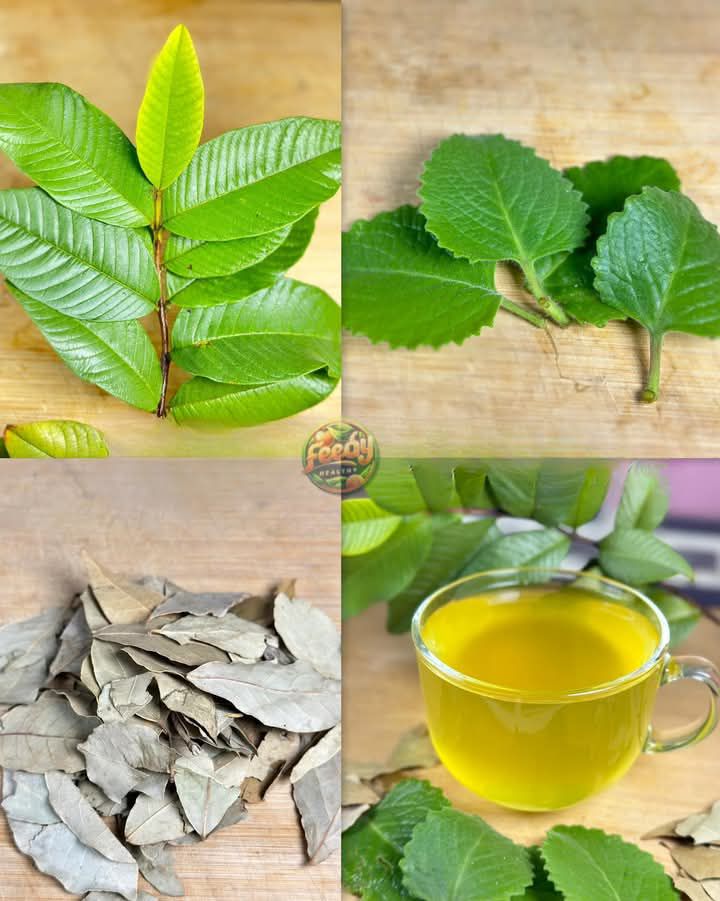ADVERTISEMENT
**How to use mango leaves for diabetes:**
– Mango leaf tea: Boil a handful of mango leaves in water for about 5-10 minutes. Strain and drink the tea once or twice a day.
– Mango leaf powder: Dried mango leaves can be ground into a fine powder, which can be mixed with water or added to smoothies.
**Potential Benefits:**
– Helps regulate blood sugar levels.
– Improves insulin sensitivity.
– Supports pancreatic health.
#### **3. Guava Leaves (Psidium guajava)**
Guava leaves have long been used in traditional medicine for their numerous health benefits, including their ability to regulate blood sugar levels. Guava leaves are rich in antioxidants, vitamins, and minerals that help manage diabetes and prevent complications. The leaves contain flavonoids and tannins, which have been shown to help lower blood sugar levels and improve insulin function.
Guava leaves are believed to slow down the absorption of sugar from the digestive system, reducing post-meal blood sugar spikes. They also help reduce oxidative stress and inflammation, both of which are linked to diabetes complications.
**How to use guava leaves for diabetes:**
– Guava leaf tea: Boil a few guava leaves in water for 5-10 minutes, strain, and drink the tea once or twice a day.
– Guava leaf extract: Guava leaf extract is available in supplement form and can be taken as directed.
**Potential Benefits:**
– Reduces post-meal blood sugar spikes.
– Improves insulin function.
– Reduces oxidative stress and inflammation.
#### **4. Cinnamon Leaves (Cinnamomum verum)**
Cinnamon, widely known for its delicious flavor, also has medicinal properties that can help manage blood sugar levels. While cinnamon bark is commonly used in supplements and teas, the leaves of the cinnamon tree have also been found to contain compounds that can help lower blood sugar levels. Cinnamon leaves contain bioactive compounds like cinnamaldehyde and eugenol, which are believed to improve insulin sensitivity and help regulate glucose metabolism.
Cinnamon leaves are thought to help reduce insulin resistance, making it easier for the body to use insulin effectively. They also have antioxidant and anti-inflammatory properties, which can protect against diabetes-related complications.
**How to use cinnamon leaves for diabetes:**
– Cinnamon leaf tea: Boil cinnamon leaves in water for 5-10 minutes, strain, and drink the tea once or twice a day.
– Cinnamon leaf powder: Grind dried cinnamon leaves into powder and mix with warm water or smoothies.
**Potential Benefits:**
– Improves insulin sensitivity.
– Reduces blood sugar levels.
– Protects against oxidative stress.
#### **5. Olive Leaves (Olea europaea)**
Olive leaves, the leaves of the olive tree, have been used for centuries in traditional medicine for their wide range of health benefits, including their ability to help manage diabetes. Olive leaves contain oleuropein, a powerful antioxidant that has been shown to help regulate blood sugar levels by improving insulin sensitivity and reducing oxidative stress.
Studies have suggested that olive leaf extract may help lower blood sugar levels and reduce the risk of complications related to diabetes, such as cardiovascular disease and kidney damage. Olive leaf extract has also been shown to improve lipid profiles, which is crucial for people with diabetes who are at increased risk for heart disease.
**How to use olive leaves for diabetes:**
– Olive leaf tea: Boil a handful of fresh or dried olive leaves in water for 5-10 minutes, strain, and drink the tea once or twice a day.
– Olive leaf extract: Olive leaf extract is available in supplement form and can be taken according to the recommended dosage.
**Potential Benefits:**
– Improves insulin sensitivity.
– Lowers blood sugar levels.
– Reduces the risk of diabetes-related complications.
### **Conclusion**
Incorporating natural remedies like the healing leaves of bitter melon, mango, guava, cinnamon, and olive can be a beneficial part of managing diabetes. While they should not replace medical treatments, these leaves can serve as valuable supplements to a well-rounded diabetes management plan. They offer potential benefits like lowering blood sugar levels, improving insulin sensitivity, and reducing inflammation and oxidative stress, all of which play a critical role in managing diabetes and preventing complications.
Before incorporating any new remedies into your diabetes management routine, it’s essential to consult with your healthcare provider. They can help ensure that these natural remedies complement your current treatment plan and advise on the appropriate dosage or preparation methods.
As with any dietary change or natural remedy, consistency is key. Over time, incorporating these healing leaves into your daily routine could help manage your blood sugar levels and improve your overall health. By combining these natural remedies with a healthy diet, regular physical activity, and proper medication, you can take proactive steps toward managing diabetes and living a healthy, fulfilling life.
